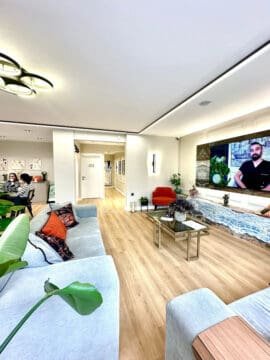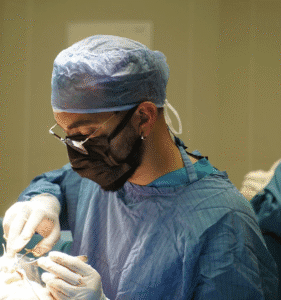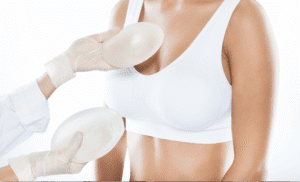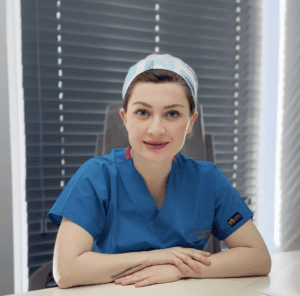Breast Augmentation: From the First Consultation to the Perfect Result
Breast augmentation — a surgical procedure performed by plastic surgeons to change the shape and size of the mammary glands. The most popular type of surgery is breast enlargement. It is done for medical reasons as well as for aesthetic purposes. The procedure helps women feel more beautiful, happier, and more confident.
Breast Enlargement: Pros and Cons
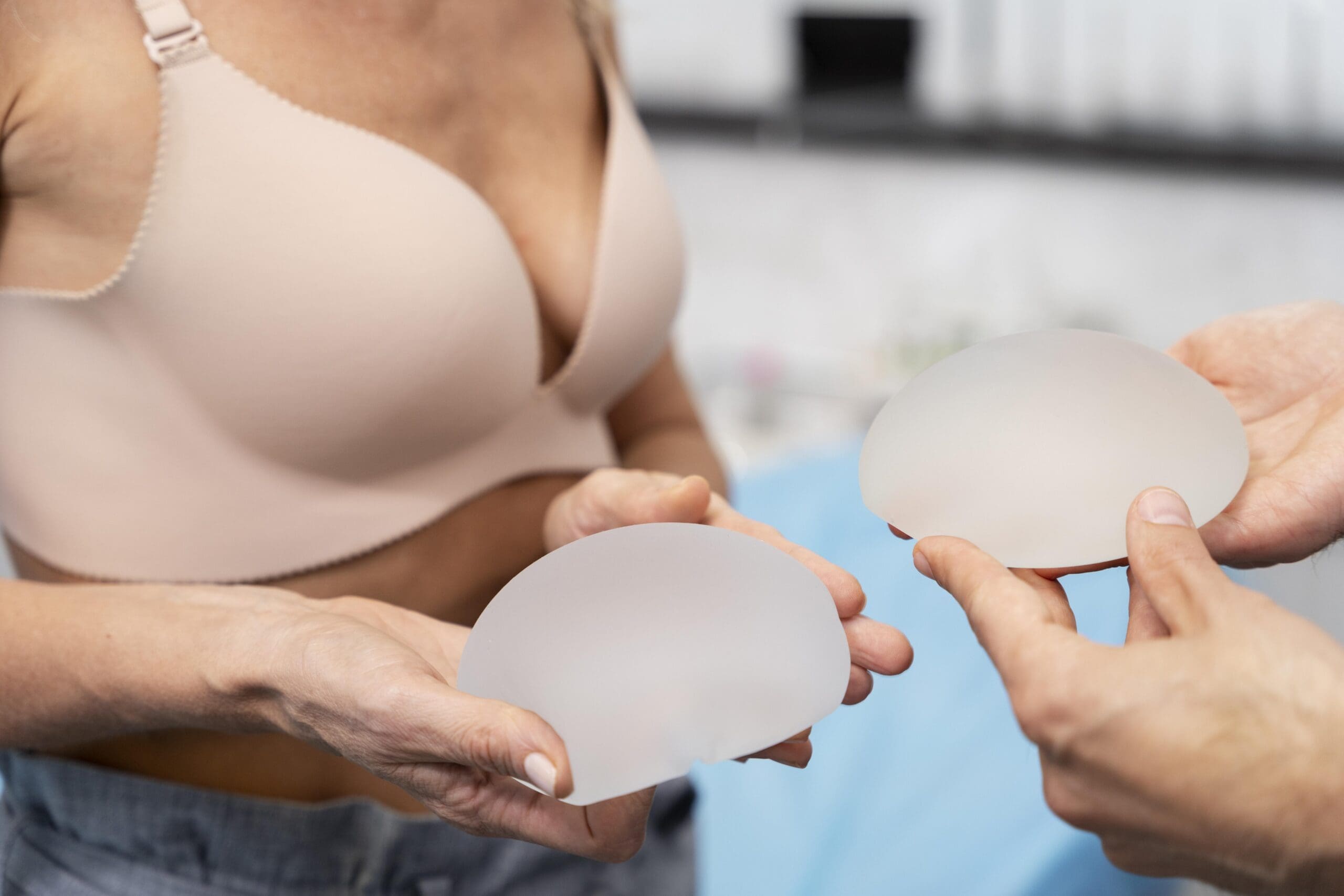
Women undergoing surgery for the first time want to know everything about breast enlargement, as the procedure is surrounded by many myths and stereotypes. However, if performed by a qualified plastic surgeon, there is nothing to fear.
Advantages
A brief overview of facts and benefits will help you understand the nuances of the procedure and be well informed.
- The result can be seen before the surgery. Clinics use 3D modeling devices. This allows choosing the size and shape of implants that harmonize best with the body type.
- Breast augmentation surgery does not interfere with natural breastfeeding. If a woman plans to have children and breastfeed in the future, it is important to inform the surgeon. An incision will be made under the armpit or breast to avoid damaging the ducts.
- The result lasts for several years and depends on the type of implant and individual factors.
- The surgery is considered minimally traumatic, and the patient quickly returns to her normal life.
Nevertheless, it is impossible to enlarge breasts without some discomfort, as the operation has some drawbacks.
Disadvantages
There are few downsides, but first-time breast augmentation patients are often scared by common myths. These include problems with lactation, pain, the possibility of rapid implant ruptures leading to the need for repeated surgery. Choosing a qualified plastic surgeon specializing in mammoplasty will prevent these concerns from becoming a reality.
Possible disadvantages:
- Rapid weight loss or breastfeeding may require a combined approach — augmentation with a lift;
- Repeat mammoplasty may be needed in the future;
- It may not be possible to achieve the desired size due to medical reasons;
- Implant ruptures can occur, requiring replacement;
- Slender women wanting to increase several cup sizes may require multiple surgeries, otherwise the skin will stretch excessively.
To avoid “side effects,” it is important to choose your doctor responsibly.
Methods and Types of Breast Enlargement
There are different types of breast enlargement. The main methods are non-surgical and surgical.
Non-surgical methods of breast enlargement include:
- Gymnastics, massage, special exercises;
- Creams and other cosmetics;
- Enhancing lingerie.
But the best results, which last for years rather than months, are shown by surgery. The main surgical methods are:
- Lipofilling.
- Augmentation using implants.
Lipofilling is an alternative for women not ready for endoprostheses. Fat tissue is taken from the abdomen or thighs by liposuction. The result is less durable compared to silicone implants. It is not suitable for slender body types but is a great option for women with contraindications for implants who want to maintain breast shape with slight enlargement.
Implant placement is a more common method, as implants can last a lifetime. Replacement is done if ruptures occur.
Indications for Surgery
Main indications for the procedure:
- Breast asymmetry;
- Congenital anatomical underdevelopment;
- Defects or scars after previous surgeries;
- Desire to improve natural breast shape.
Additionally, breasts lose shape and tone due to weight loss and breastfeeding. Plastic surgery — mammoplasty — helps restore former attractiveness.
Contraindications
To determine if breast augmentation is suitable, you should schedule a consultation with a plastic surgeon.
Main contraindications include:
- Age under 18 years;
- Presence of chronic or acute infectious diseases, as well as blood clotting disorders;
- Vascular diseases, oncology;
- Less than six months since breastfeeding ended.
Preparation for Breast Augmentation Surgery
The preparation process consists of several stages:
- Consultation with the surgeon, where you can ask questions and choose implants.
- The woman visits a therapist and anesthesiologist, undergoes tests and examinations.
- After specialists approve based on medical history, preparations for surgery begin.
Important:
- Before surgery, discontinue hormonal drugs and medications affecting blood clotting (2 weeks prior).
- Stop alcohol and smoking 3 days before (or minimize smoking).
- No food 8-9 hours before surgery; no water 6 hours before.
Choosing an Implant
Each woman, together with her doctor, chooses the implant type. Types of fillers:
- Silicone implants.
- Saline (physiological solution) implants.
- Hydrogel implants.
Before the surgery, pay attention to:
- Shape (round or teardrop).
- Size (measured in cubic millimeters).
- Surface texture (textured or smooth).
Then, together with the surgeon, the implant placement method is chosen — under the mammary gland, under the chest muscle, or combined.
How Breast Augmentation Surgery is Performed
The surgery is performed under general anesthesia, which is discussed beforehand with the anesthesiologist. During mammoplasty, the plastic surgeon marks the area to determine implant placement, taking into account the surgical goals. All details, including implant choice, are agreed upon prior to the procedure. Duration ranges from 50 minutes to 3 hours. After surgery, a special dressing is applied.

Rehabilitation After Mammoplasty
The first day after surgery, the patient stays in the clinic under specialist supervision and receives diuretics. Over the next three days, the anesthetic dosage is gradually reduced. The patient is discharged home, where she should follow simple recommendations:
- Visit the clinic for dressing changes;
- Wear compression garments;
- Avoid physical exertion;
- Do not visit baths or saunas.
After one week, painkillers are discontinued. The patient may still experience itching as the skin adjusts to the new volume. A corrective bra is recommended, which should only be removed for showering. Bruises fade, and the patient feels well, but sexual activity and heavy physical loads are prohibited. After three weeks, bruises and swelling disappear, itching and discomfort subside, and the new breast shape becomes apparent.
If you are planning breast augmentation surgery, please fill out the feedback form — our medical consultants will provide you with a free detailed consultation and help you choose the right doctor in Turkey.
